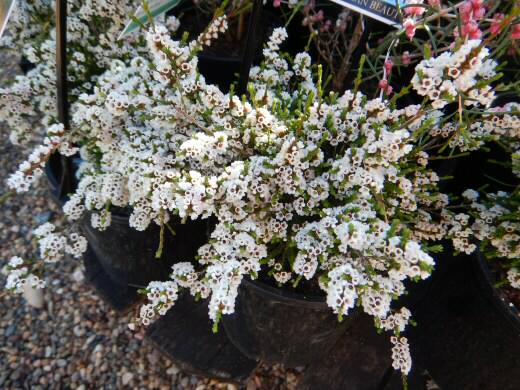This prostrate form of the Fringed Myrtle makes an ideal groundcover, with vivid green scented foliage. Blooms abundantly in spring with white to pink flowers, which turn to a deep red colour. A wonderful choice for mass plantings, landscape design, rockeries and as an attractive border.
Prefers dry climates and may not withstand humidity well, particularly if soils are not well drained.
Water regularly while plant is getting established and mulch well. While this plant can withstand drought once established, it will look more lush and healthy with consistent watering.

